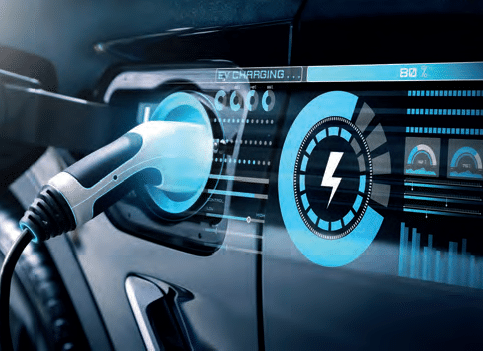‘Making the most of the e-car afterlife’ – Recycling International
February 21st, 2023
Back to posts
February 21st, 2023
Back to posts
LKQ expects there to be between 30 and 40 million EVs on the road in Europe by 2030 with 4.2 million fully electric and another 12 million plug-in hybrid vehicles past the warranty period (typically eight years) by that time. ‘We are turning to remanufacturing to boost the amount of car parts that are eligible for reuse in a new vehicle production,’ Schön tells delegates at the latest International Congress for
Battery Recycling (ICBR) in Salzburg. ‘This may even include battery cells as the faulty cells are detected and taken out.’
WHEN THE SPARK FADES
The leader in salvaged and recycled OEM automotive parts observes that, after ten years in use, the capacity of a car battery decreases to roughly
68%. ‘Reuse in the same application is not favourable,’ Schön says. Instead, the EV battery is rerouted to secondary applications like energy storage or sent a recycler to create a new generation of batteries. ‘Based on our experience, we see around two thirds (64%) of batteries
fail after 10 to 14 years,’ he reports. Causes of capacity fade include loss of lithium inventory, an increase in internal resistance and loss of active electrode material. A root cause may be mechanical stress or chemical/electrolyte decomposition.
‘The weakest cell causing the problem determines how much and how fast you can still charge the battery,’ Schön explains. ‘So the battery pack will read as entirely faulty, which is almost never the case.’ He points out the aftermarket for
automotive spare parts is seeing consistent growth, which is not surprising because modern disassembly and testing technology allow for top-tier
remanufacturing that is both safe and efficient. Reviving parts can reduce emissions of the car-making process by over 80% while cutting costs by
more than half. ‘Our team focuses on fully electric vehicle batteries, which have a higher value and have become more standardised,’ Schön adds. ‘The industry has had decades to improve the traditional combustion engine. Just imagine what’s possible if we apply the same time and effort to this exciting new growth market. I’m talking about carmakers, repair specialists and recyclers – all of us.’
A BILLION REASONS
LKQ cites its collaboration with Volvo as a ‘proof of concept’ for commercial EV battery remanufacturing. The partnership involved the carmaker’s V60 model battery. Results are seen as ‘very positive’ and could be a stepping stone towards remanufacturing other Volvo car batteries as well as
those of other leading brands. Setting up a European remanufacturing and repair hub would also ensure
a ‘bundled’ volume of parts and components, Schön says. It would make the car industry more resistant to volatile market conditions such as parts
scarcity and soaring materials and energy prices. ‘I expect a steep learning curve for any player in the EV battery repair sector and bundling our strengths is the way forward,’ he declares. ‘That’s why it’s so important to keep each other up to date on new developments and to connect at industry events. Together, we can pool our expertise to create a new standard for sustainability in Europe. ‘These are exciting times,’ Schön concludes. ‘Design is changing, available technologies to dismantle and test car parts are changing and consumer and brand positions on the importance of sustainability are changing. There are many drivers for growth and, you could say, a few billion reasons to be optimistic.’
Source: Recycling International, February 20, 2023